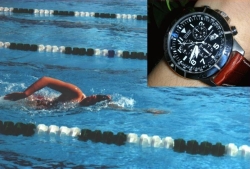Lewis
Member
Who here believes all that is said about The Shroud Of Turin ? Please post your thoughts.
Scientists "Jesus Rose From The Dead! " Astounding Proof!
[video=youtube;_voTiCTqv4Q]http://www.youtube.com/watch?v=_voTiCTqv4Q[/video]
No single artifact of the past has so exemplified the interface between science and religion as the Shroud of Turin. What are the facts and how do we separate the facts from both religious and scientific bias and agenda-based conclusions? First, we must separate the shroud from that which is responsible for bias, namely that it is the burial shroud of Jesus of Nazareth and investigate it instead as a putative artifact of a first century crucifixion and burial. The shroud has been subjected to numerous scientific tests over the years culminating in 1988 with a radiocarbon measurement and dating procedure. The testing of the shroud and the conclusions reached lie basically in two areas, the physical shroud itself and the very unique image on the shroud.
Physical Examination of the Shroud
FACT:The shroud is a linen cloth measuring 4.6 x 1.1 meters corresponding to a standard measurement of 8 x 2 Philetaric cubits in use in Palestine during the first century. (see Whiston, W., Life and Works of Flavius Josephus, Winston. Chicago, p. 1008-1009)
FACT: The shroud is a herringbone twill with a 3:1 weave, of probably 1st century Syrian design. The flax fibrils contain entwisted cotton fibrils from a previous work of the loom. The cotton is Gossypium herbaceum, a Middle Eastern species not found in Europe. (Raes, G.: La Sindone, 1976; Tyrer, J. Textile Horizons, Dec, 1981)
FACT: The shroud contains pollen grains from 58 species of plants, 17 indigenous to Europe where the artifact has been for 7 centuries and the majority being plants indigenous, some exclusively, to the area of the Dead Sea and Turkey. These include Nyoscyamus aureus, Artemisia herba-alba and Onosma syriacum. (Frei, M., La Sindone, Scienza e Fide, Bologna, 1983; Frei, M., Shroud Spectrum International 3, 1982)
Conclusion: The linen of the shroud was manufactured and woven in the Middle East, most probably Syria, and is a design used in the 1st century, albeit uncommon and expensive.
Scientists "Jesus Rose From The Dead! " Astounding Proof!
[video=youtube;_voTiCTqv4Q]http://www.youtube.com/watch?v=_voTiCTqv4Q[/video]
No single artifact of the past has so exemplified the interface between science and religion as the Shroud of Turin. What are the facts and how do we separate the facts from both religious and scientific bias and agenda-based conclusions? First, we must separate the shroud from that which is responsible for bias, namely that it is the burial shroud of Jesus of Nazareth and investigate it instead as a putative artifact of a first century crucifixion and burial. The shroud has been subjected to numerous scientific tests over the years culminating in 1988 with a radiocarbon measurement and dating procedure. The testing of the shroud and the conclusions reached lie basically in two areas, the physical shroud itself and the very unique image on the shroud.
Physical Examination of the Shroud
FACT:The shroud is a linen cloth measuring 4.6 x 1.1 meters corresponding to a standard measurement of 8 x 2 Philetaric cubits in use in Palestine during the first century. (see Whiston, W., Life and Works of Flavius Josephus, Winston. Chicago, p. 1008-1009)
FACT: The shroud is a herringbone twill with a 3:1 weave, of probably 1st century Syrian design. The flax fibrils contain entwisted cotton fibrils from a previous work of the loom. The cotton is Gossypium herbaceum, a Middle Eastern species not found in Europe. (Raes, G.: La Sindone, 1976; Tyrer, J. Textile Horizons, Dec, 1981)
FACT: The shroud contains pollen grains from 58 species of plants, 17 indigenous to Europe where the artifact has been for 7 centuries and the majority being plants indigenous, some exclusively, to the area of the Dead Sea and Turkey. These include Nyoscyamus aureus, Artemisia herba-alba and Onosma syriacum. (Frei, M., La Sindone, Scienza e Fide, Bologna, 1983; Frei, M., Shroud Spectrum International 3, 1982)
Conclusion: The linen of the shroud was manufactured and woven in the Middle East, most probably Syria, and is a design used in the 1st century, albeit uncommon and expensive.






